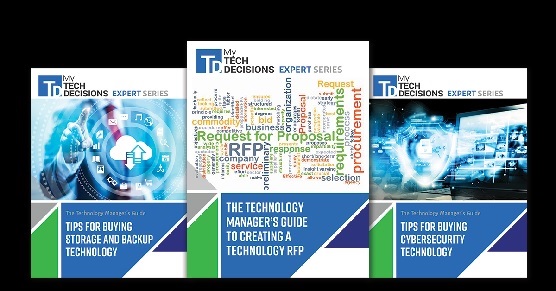Any IT project or business plan will obviously change based on project scope and the needs of the organization creating it. But in general, we find that many members of our audience are searching for the right way to write an IT business plan.
So we’ve interviewed some IT professionals to create this guide to writing IT business plans. We hope you’ll take something away from their wisdom.
The smarter way to define business needs
This, of all steps, is probably the most obvious: before writing an IT department business plan or project plan, you need to define your org’s needs. But this isn’t so straightforward, and it may even be the step which takes the most time.
More IT leaders are engaging with marketing leaders because new digitalization initiatives center around how companies market themselves more than anything else.
Jeff Day, North of 10 Advisors, suggests the smartest way to go about defining your business needs is to get involved with your company or organization’s marketing leaders.
“Marketing has exponentially more budget than IT departments do. IT is an operational line item in CIO budget, while marketing is a revenue generation line item in the CEO’s budget. You can learn a lot about where your business is going from the marketing department.”
Another important part of this step is to define what “technical debt” means to you.
“There’s often a gap between tech users’ expectations and what a technological investment actually does,” explains Brad Sousa, Chief Technology Officer, AVI Systems.
“This is called ‘technical debt,’ and if you accumulate enough, it impacts the ability to adopt projects in the future. Understanding what the tech debt may or may not be and being intentional about closing that debt is critical.”
Understanding it completely revolves around understanding the users’ expected experience. IT leaders tend to think about it in terms of specifications/requirements, making selections based on those. But that often doesn’t satisfy user expectation.
Many projects derail because the project plan does not take into consideration the roles and dependencies of other groups/departments, says Jeffrey Fleischman, Chief Marketing Officer at Altimetrik.
“Every team that works with IT must be included upfront in the development of a plan. This includes sales, product, finance, marketing, compliance, privacy, legal, etc. For example, a project can come to a halt by legal if regulatory or privacy needs are not addressed. Inclusion will lead to a faster and smoother implementation.”
What every IT business continuity or project plan should include
Regardless of department, any continuity or project plan should outline key contacts and core activities that must be maintained.
Think of the business continuity plan like a minimally viable product (MVP): what are the key functions and contacts that need to be activated?
The importance of communication before, during, and after an incident can’t be overstated in an IT continuity plan, says Jason Lin, CFO of Centage.
“Strategies should include detailed communication methods by which different resources can be linked, and with the re-shaping of workplace environments caused by COVID-19, these methods should be carefully reviewed.”
Outside of key functions, the “nice to have” options should be deprioritized to ensure that the lights are on and core functions are not disrupted.
Here’s what every IT business plan should include:
Data Recovery
“I can’t tell you how many companies still use physical prem-based solutions,” Day says. “Internet didn’t go down during COVID. You need to have a back-up.”
Team Collaboration
Perhaps the most important investment you could make, especially in a new, post-pandemic era which stressed the importance of smooth team communication.
CRM & Data Analytics
To ensure your systems are working smoothly over time and to collect actionable data on how to improve operations.
Business Accelerators
What’s the outcome, acceleration, adoption needs, etc.?
Emergency response procedures
“These procedures are vital in ensuring the plan creates a systematic and timely path towards resolution,” says Lin.
Disruption minimization initiatives
How to minimize disruption versus adding velocity to other infrastructure.
Some kind of adoption track
Consensus among stakeholders – maybe they sign off on each individual section? – and a thoughtful plan for implementation and training.
The future isn’t just a tech concern, it’s a generational one
What is a business plan if not a strategic vision for how to handle the future? In IT departments, that strategy almost always revolves around technology, but it should revolve even more around people.
For instance, there are major differences in generations regarding the validation of work and how different age groups solve problems.
There’s a growing body of evidence that says Gen Z and Millennials can be highly productive at home, but the value of work diminishes over time as they are more isolated from home. That could lead to a retention problem, Sousa says.
“When I, a baby boomer, was in grade school, the economic problem at the time was scaling industry. So solving a problem meant defining a problem, defining solutions, proving it is the best solution based on the facts. But younger folks are now taught community work is more valuable than individual work.
“They’ll bring their solution back based not only on facts, but on how many people agree with them.”
“We used to be concerned about bringing the office to the home; now we’re focused on bringing the home to the office. Creating spaces where we can restore a sense of community in the workplace. If we’re successful, it’ll help us restore the connection to community and the purpose of the work.”
This, he says, should be a driving factor for how to design any tech consideration.
If you enjoyed this article and want to receive more valuable industry content like this, click here to sign up for our digital newsletters!










Leave a Reply